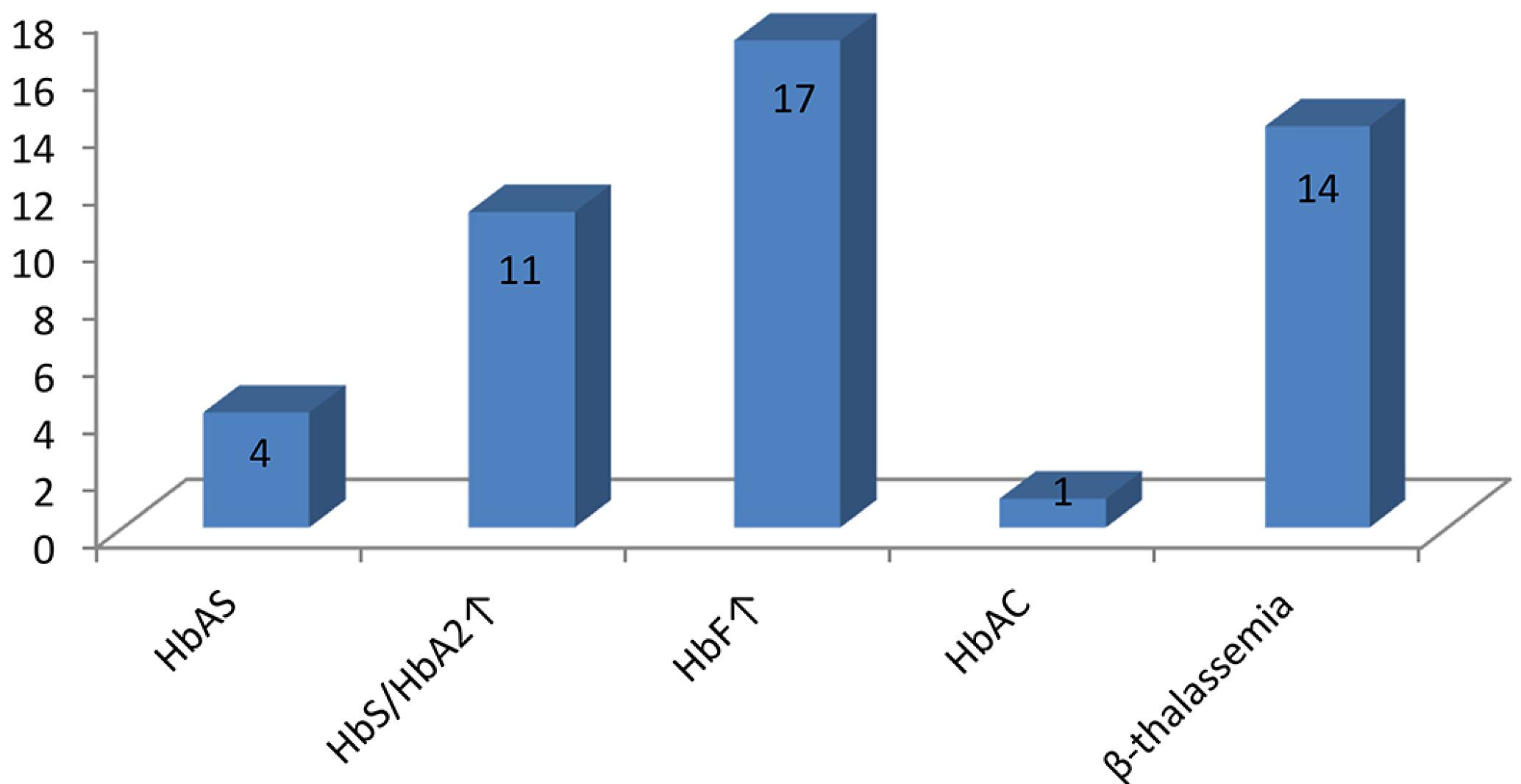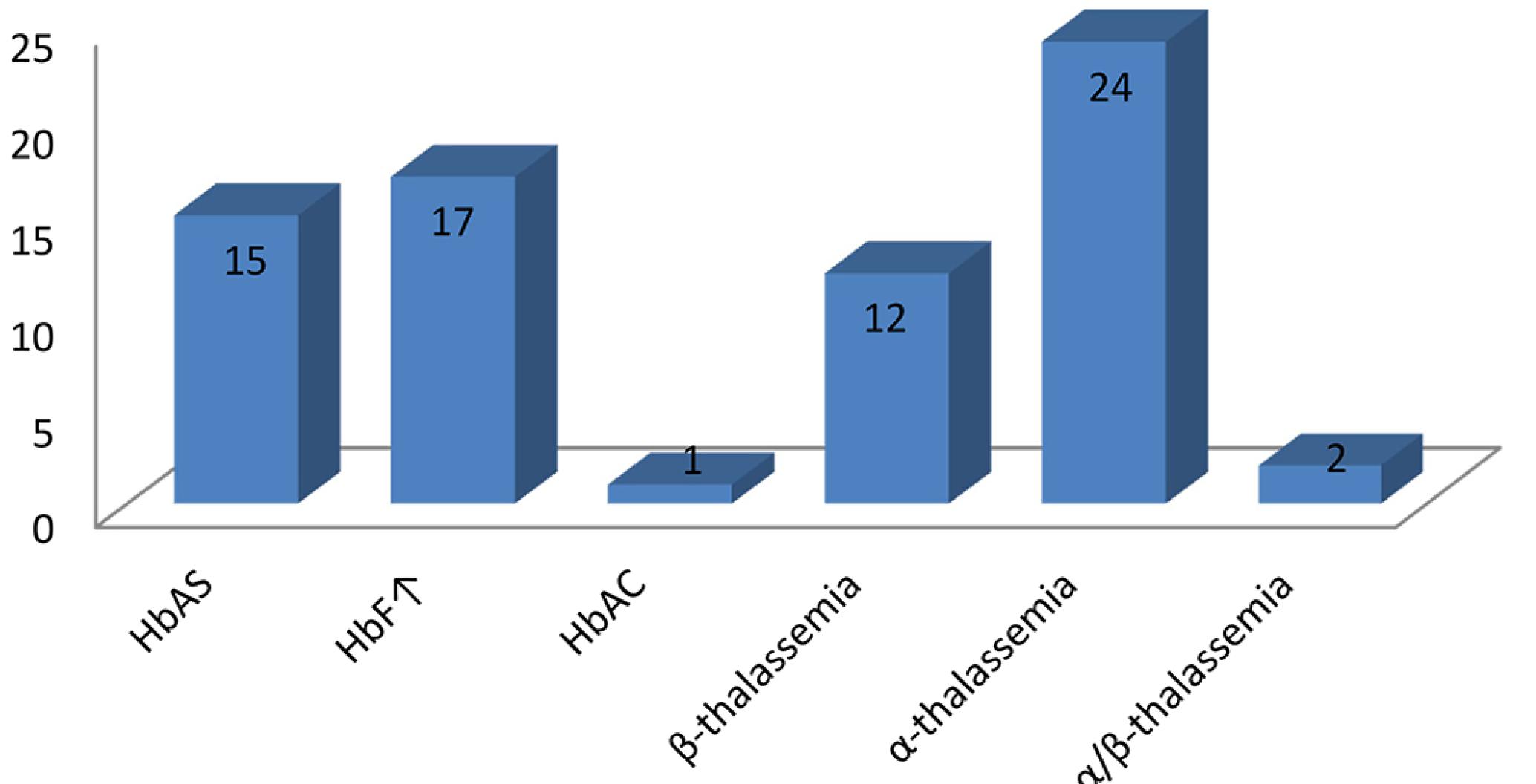The hemoglobinopathies are included among the most common genetic diseases in the world. In Brazil, hemoglobinopathies are related to the diversity of racial backgrounds and the degree of interbreeding. The study focused on the prevalence of hemoglobinopathies using conventional and confirmatory laboratory tests in children from public schools in Ribeirão Preto-SP. The study involved the participation of 427 children between six and nine years of age. Hematologic evaluation, hemoglobin electrophoresis on cellulose acetate at alkaline pH, quantification of hemoglobin fractions by high performance liquid chromatography (HPLC) and detection of -α3.7 deletion for α thalassemia by polymerase chain reaction were performed. The results of hemoglobin electrophoresis on cellulose acetate and HPLC of the children studied showed the presence of 30 children (7%) with hemoglobinopathies. Eleven children presented results indicating suspicion of S/β-thalassemia; their parents and/or siblings were evaluated and confirmed the presence of only Hb S. The analysis of deletion -α3.7 to characterize α-thalassemias sampling performed on 207 participants identified 26 children (12.6%) with deletion -α3.7. Thus, 54 (12.6%) of the children studied present this genetic alteration. For the detection of α-thalassemias it is necessary to use confirmatory methods such as molecular analysis and evaluation of family members in doubtful cases to facilitate genetic counseling in families, in which deletion -α3.7 is more frequent in Brazil.
Hemoglobinopathy; Hemoglobin electrophoresis; High performance liquid chromatography/quantitative analysis; Polymerase chain reaction


